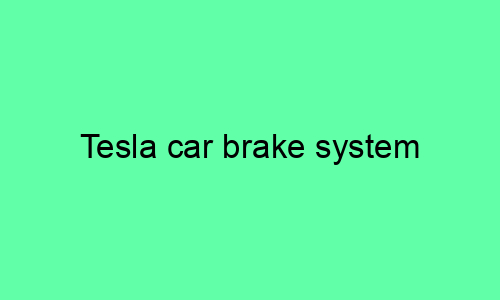Tesla Car Brake System
Introduction
Tesla cars are known for their advanced technology, and the brake system is no exception. Tesla cars use a regenerative braking system, which means that the electric motor is used to slow down the car, rather than traditional brake pads. This system is more efficient than traditional brakes, and it also helps to extend the life of the brake pads.
How Regenerative Braking Works
When you apply the brakes in a Tesla car, the electric motor reverses direction and begins to slow down the car. This process generates electricity, which is then stored in the battery. This electricity can then be used to power the car, which helps to improve efficiency.
Benefits of Regenerative Braking
There are a number of benefits to using regenerative braking in Tesla cars. These benefits include:
* Improved efficiency: Regenerative braking helps to improve efficiency by capturing energy that would otherwise be lost as heat. This can help to extend the range of the car on a single charge.
* Extended brake pad life: Regenerative braking reduces the wear and tear on the brake pads, which can help to extend their life.
* Reduced emissions: Regenerative braking helps to reduce emissions by reducing the amount of energy that is wasted as heat.
Limitations of Regenerative Braking
There are also some limitations to using regenerative braking in Tesla cars. These limitations include:
* Reduced braking power: Regenerative braking can reduce the braking power of the car, especially at high speeds.
* Limited range: Regenerative braking is only effective when the battery is not full. If the battery is full, the car will not be able to capture any additional energy through regenerative braking.
Conclusion
Overall, regenerative braking is a valuable feature that can improve the efficiency, range, and emissions of Tesla cars. However, it is important to be aware of the limitations of regenerative braking before using it.






